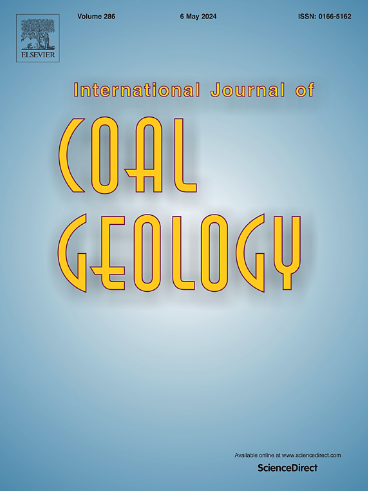Unveiling the organic-rich Upper Ordovician black shales of the Foz de Alge region (Central Iberian Zone, Portugal): Insights from geochemistry and organic petrography
IF 5.7
2区 工程技术
Q2 ENERGY & FUELS
引用次数: 0
Abstract
A sequence of Upper Ordovician black shales from the Casal de Alge area, Figueiró dos Vinhos, in the Central Iberian Zone, with unusually high organic matter content, is studied for the first time. These black shales rich in organic matter (31.21–41.29 %), also contain quartz (30–61 %) and illite (26–62 %), revealing the contribution of siliciclastic and detrital elements to their composition. The organic matter is composed of well-preserved graptolites and pyrobitumen. The abundance of graptolites supports a marine origin for the black shales, a conclusion further corroborated by the low δ13Corg values (−27.98 and − 27.66 ‰). High graptolite abundance indicates a warm climate and high primary productivity, likely enhanced by nutrient input from continental weathering, as evidenced by the presence of detrital elements in the black shale composition. The unusually high organic matter content in these Upper Ordovician black shales is likely attributable to the graptolite end-Ordovician mass extinction during the Hirnantian glaciation. Additionally, the high clay content in these shales may have further contributed to organic matter preservation, due to clay minerals' strong capacity to absorb.
The equivalent vitrinite reflectance (VReqo) ranges from 4.38 to 5.18 %, indicating that black shales reached the meta-anthracite stage. This high thermal maturation appears to be primarily associated with regional burial; however, circulation of hydrothermal fluids may also have contributed, potentially related to the Figueiró dos Vinhos and Bouçã granitic plutons. Moreover, these fluids likely played a role in the enrichment of K₂O of the black shales and induced the conversion of kaolinite, originally formed under warm and humid climatic conditions, into illite.
揭示Foz de Alge地区(葡萄牙伊比利亚中部地区)富有机质的上奥陶统黑色页岩:来自地球化学和有机岩石学的见解
首次研究了伊比利亚中部Casal de Alge地区Figueiró dos Vinhos上奥陶统黑色页岩层序,发现其有机质含量异常高。黑色页岩有机质含量丰富(31.21 ~ 41.29%),同时含有石英(30 ~ 61%)和伊利石(26 ~ 62%),显示了硅屑和碎屑元素对其组成的贡献。有机质由保存完好的笔石和焦沥青组成。笔石丰度支持黑色页岩的海相成因,低δ13Corg值(- 27.98‰和- 27.66‰)进一步证实了这一结论。高笔石丰度表明温暖的气候和高初级生产力,可能是由大陆风化的营养输入增强的,黑色页岩组成中存在碎屑元素。上奥陶统黑色页岩有机质含量异常高,可能与希尔南天冰期末奥陶统笔石大灭绝有关。此外,由于粘土矿物的强吸收能力,这些页岩中的高粘土含量可能进一步有助于有机质的保存。等效镜质组反射率(VReqo)在4.38 ~ 5.18%之间,表明黑色页岩进入了变质无烟煤阶段。这种高热成熟似乎主要与区域埋藏有关;然而,热液流体的循环也可能起作用,可能与Figueiró dos Vinhos和Bouçã花岗岩岩体有关。此外,这些流体可能对黑色页岩的K₂O富集起了作用,并促使原本在温暖潮湿气候条件下形成的高岭石转化为伊利石。
本文章由计算机程序翻译,如有差异,请以英文原文为准。
求助全文
约1分钟内获得全文
求助全文
来源期刊

International Journal of Coal Geology
工程技术-地球科学综合
CiteScore
11.00
自引率
14.30%
发文量
145
审稿时长
38 days
期刊介绍:
The International Journal of Coal Geology deals with fundamental and applied aspects of the geology and petrology of coal, oil/gas source rocks and shale gas resources. The journal aims to advance the exploration, exploitation and utilization of these resources, and to stimulate environmental awareness as well as advancement of engineering for effective resource management.
 求助内容:
求助内容: 应助结果提醒方式:
应助结果提醒方式:


